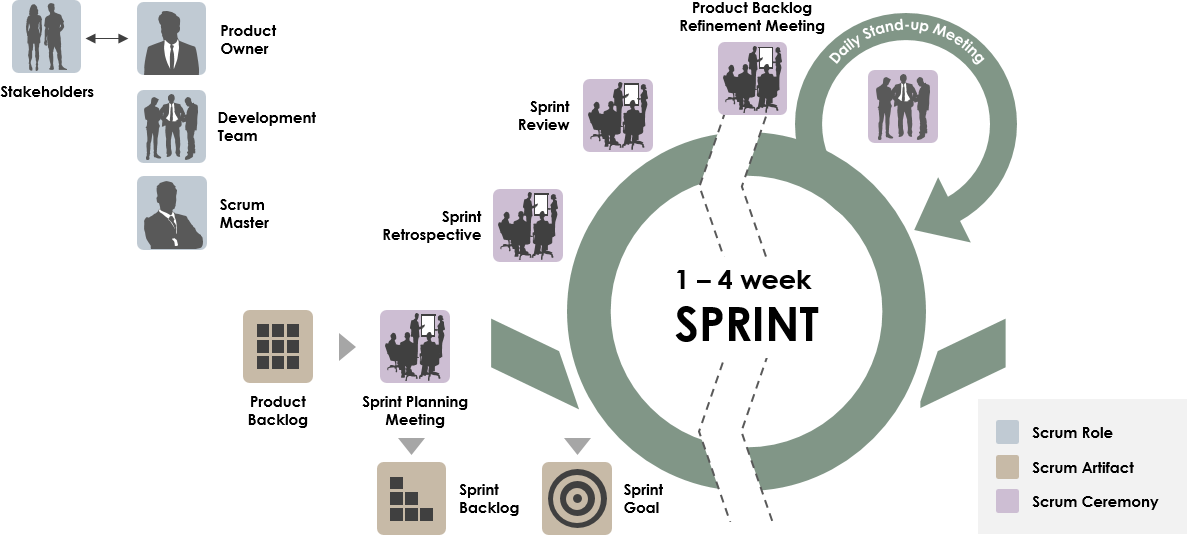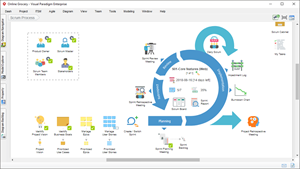This article gives a short and brief introduction of the Scrum framework. Scrum is an Iterative and Incremental approach to developing software. There are three main roles in Scrum: Product Owner, Scrum Master, and Scrum Team. A scrum project typically consists of a number of sprints and each Sprint typically lasts between 2 to 4 weeks. The key elements of Scrum are: Scrum Roles, Artifacts, and Ceremonies and together with some guidelines and rules.
To start a Scrum project, the Product Owner creates and prioritizes a list of wish-list items called the product backlog. Through the Sprint Planning Meeting, the Scrum Team decides how many items from the backlog can be developed in a Sprint. Every day of the Sprint, the team get together and do a stand-up called the Daily Scrum Meeting. During the Sprint, Scrum Master tries to remove any impediments and blockers so the Scrum Team can continue to work. At the end of the Sprint, the Team showcase the developed features to the team and other stakeholders, which are potentially candidates for release. At the end of the Sprint, there is also a Sprint Review at the Retrospective Meeting.


Best Scrum Software Every Project Needs
A powerful scrum software that supports scrum project management. It features scrum tools like user story map, product backlog management, sprint backlog management, task management, daily scrum meeting, sprint planning tool, sprint review tool, sprint retrospective tool, burndown, impediment, stakeholder and team management.
Scrum Roles:
Scrum Artifacts
Scrum Ceremonies
Scrum is an iterative and incremental framework for managing product development. It defines a flexible, holistic product development strategy where a development team works closely together o reach a common goal. It enables teams to self-organize by encouraging physical co-location or close online collaboration of all team members, as well as daily face-to-face communication among all team members and disciplines involved.
| About Visual Paradigm |
 Visual Paradigm help organizations stay competitive and responsive to change faster and better in today’s fast changing environment. Our award-winning products are trusted by over 320,000 users in companies ranging from small business, consultants, to blue chip organizations, universities and government units across the globe. It enables organizations to improve business and IT agility and foster innovation through popular open standards and process frameworks.Visual Paradigm, a killer Agile feature in 2018, introduced Scrum Process Canvas for automating the way a Scrum team to create, manage and deploy software application that empowers the team to continuously improve their performance at unprecedented speed and scale. Visual Paradigm help organizations stay competitive and responsive to change faster and better in today’s fast changing environment. Our award-winning products are trusted by over 320,000 users in companies ranging from small business, consultants, to blue chip organizations, universities and government units across the globe. It enables organizations to improve business and IT agility and foster innovation through popular open standards and process frameworks.Visual Paradigm, a killer Agile feature in 2018, introduced Scrum Process Canvas for automating the way a Scrum team to create, manage and deploy software application that empowers the team to continuously improve their performance at unprecedented speed and scale.
Manage the Entire Scrum Process in One Page
|